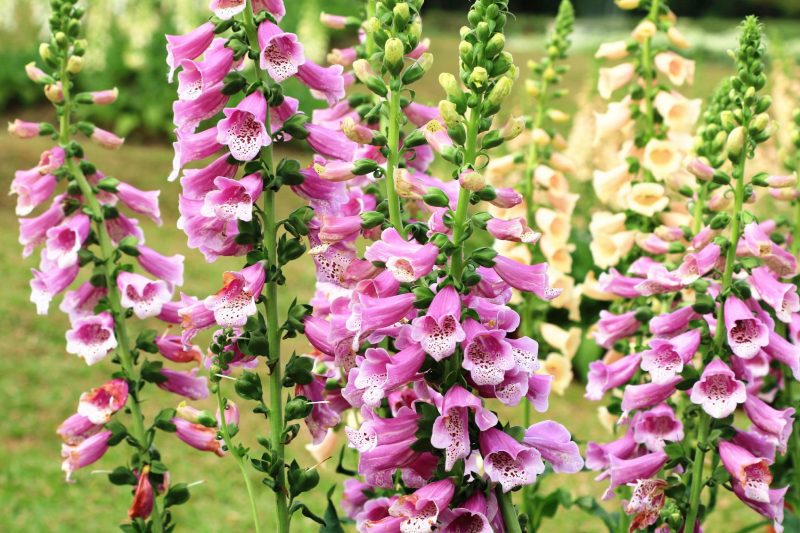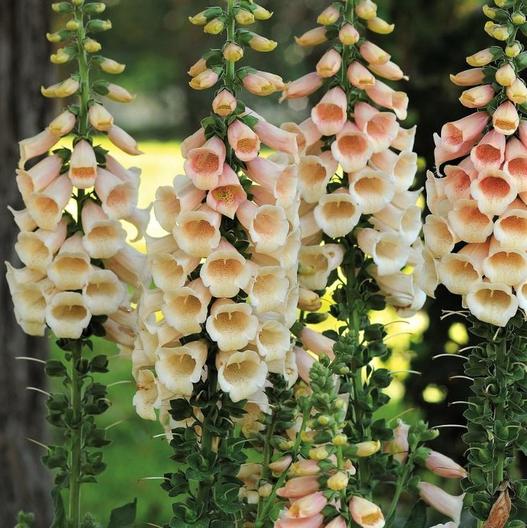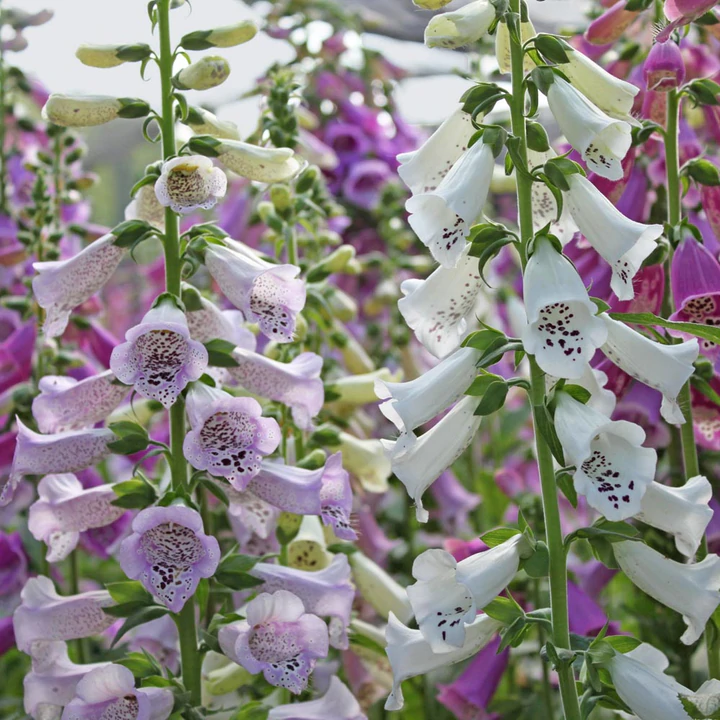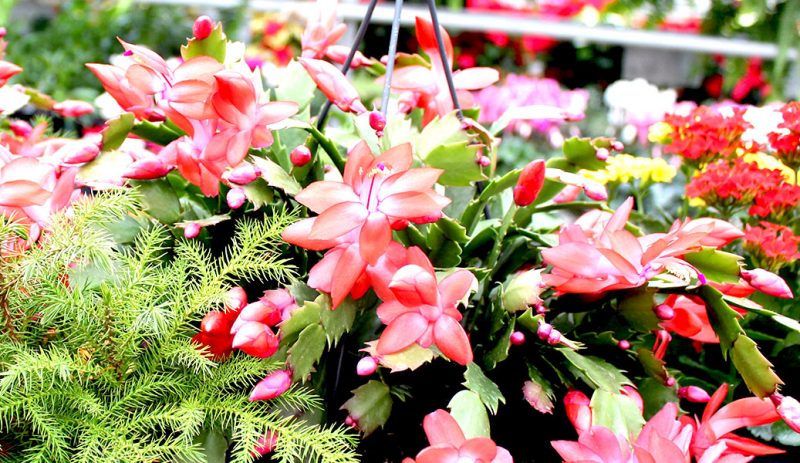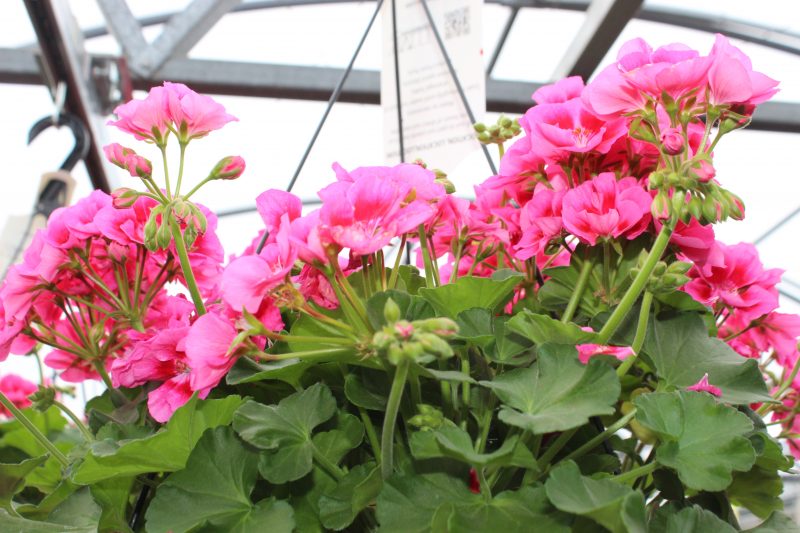
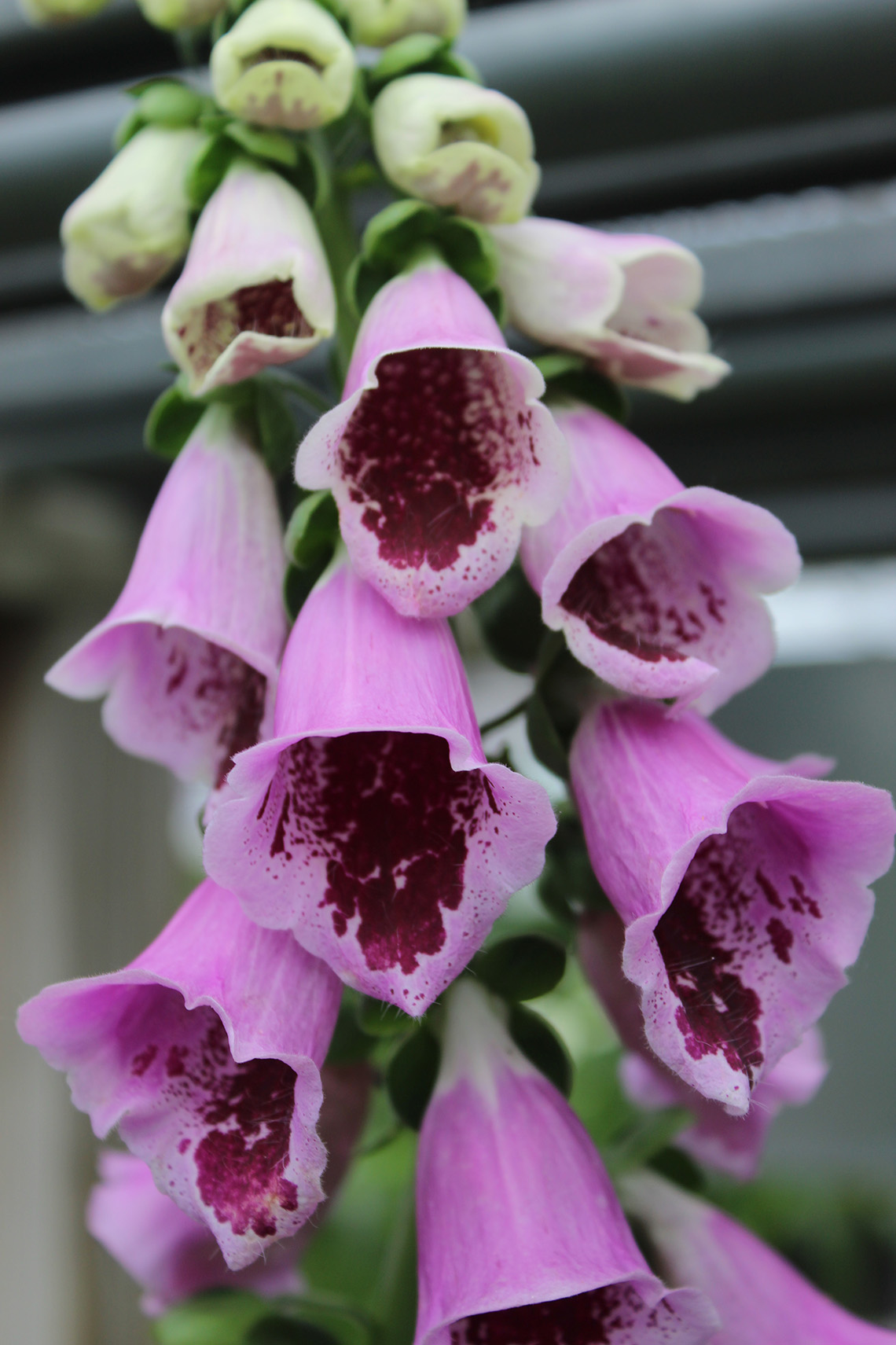
Foxes Glofa
Foxglove (digitalis) means: The Anglo-Saxon name was “foxes glofa” (“the glove of the fox”) because it looked like it would fit a fox’s paw. The Latin name, “digitalis” comes from the word “digit” or finger, since it was easy to fit a finger inside the flowers. The plant is native to Europe, the Mediterranean region, and the Canary Islands. Digitalis was eventually found to contain a powerful heart-stimulating drug. The amount of the drug varies depending on the part of the plant and even the time of year.
Foxgloves produce spikes of tubular, bell-shaped flowers that come in a wide range of colors – purple, pink, white, yellow, and red. The plant can grow from 1 – 1.5 meters / 3 to 5 feet tall, which makes them a perfect plant for adding vertical interest to a garden.
